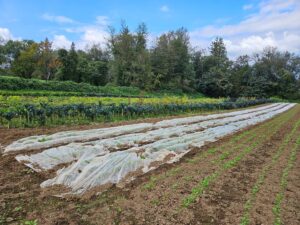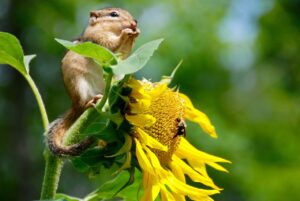-
Challenges to Climate Adaptation Among Organic Farmers in the U.S.

Project Lead: Masha Vernik, UW Environmental and Forest Sciences Data Science Lead: Curtis Atkisson Description: As seasons become less predictable and extreme weather events become more intense and frequent, farmers learn to adapt. Adaptation can mean anything from building new infrastructure that’s out of a flood zone to installing improved irrigation lines; it can mean shifting crop…
-
Updating Open-Source Verbal Autopsy Software to Modern Python Standards

Project Lead: Abraham D. Flaxman, UW Global Health Data Science Lead: Bryna Hazelton, Naomi Alterman The purpose of this project was to modernize SmartVA-Analyze, an existing open-source verbal autopsy (VA) software, by transitioning its codebase from Python 2 to Python 3. Verbal autopsy is a crucial tool for estimating the causes of death in settings where…
-
Biodiversity Horizons: Predicting Climate Risks

Partners: Christopher Trisos, Cory Merow, Andreas Schwarz Meyer, and Ben Carlson SSEC Engineers: Cordero Core, Niki Burggraff, Carlos Garcia Jurado Suarez, Ishika Khandelwal, and Anshul Tambay Research Goals and Domain As global temperatures rise, preserving biodiversity is essential for the planet’s health and human well-being. However, current biodiversity risk projections are often limited to a…
-
Looking Back on the Summer 2024 Humanities Data Science Summer Institute (HDSSI)

Seed of an Idea Anna Preus, Assistant Professor of English, and Melanie Walsh, Assistant Professor in the Information School, first met in graduate school at Washington University in Saint Louis, when they were participants in the Humanities Digital Workshop. The workshop offered the unique opportunity to explore the intersection of data science and humanities. When…
-
Constructing a Drivers-Based Framework for Assessing Water Reuse

Project leads: Carolyn Hayek, Researcher and Teaching Fellow, Columbia University, and Miriam Hacker, Research Program Manager, Water Research Foundation. Data scientist: Curtis Atkisson, eScience Institute, University of Washington. DSSG fellows: Daniel Vogler, Jihyeon Bae, Mbye Sallah, Nora Povejsil. Click here for participant bios. Communities around the United States are thinking of alternative water systems to address local water…
-
Investigating Transit Equity Through ORCA Fare Card Analysis

Project leads: Mark Hallenbeck, [Retired] Director of the Washington State Transportation Center (TRAC), University of Washington, and Ryan Avery, Deputy Director of the Washington State Transportation Center (TRAC), University of Washington. Data scientist: Bryna Hazelton, eScience Institute, University of Washington. DSSG fellows: Himanshu Naidu, Ishan Saksena, Rebecca Hayes, Siman Ning. Click here for participant bios. Transit service is a…
-
Understanding Unsheltered Homelessness in King County: UW 2023 Seattle Area Homeless Count

Project leads: Zach Almquist, Associate Professor, Department of Sociology, University of Washington. Data scientist: June Yang, eScience Institute, University of Washington. DSSG fellows: Brooke Kaye, Felix Jr. Appiah Kubi, Jessica Robinson, Rebecca Schachtman. Click here for participant bios. The US Department of Housing and Urban Development released the 2023 Annual Homeless Assessment Report (AHAR) on December 15, 2023.…
-
SSEC: Offshore Geodesy Workshop
On Friday, May 3rd, 2024, the Offshore Geodesy project team attended a workshop led by SSEC Senior Software Engineer Don Setiawan. The workshop included Professor David Schmidt and Post Doctoral Researcher John DeSanto, as well as Jesse Hutchinson from Ocean Networks Canada and SSEC Research Scholar Madhav Kashyap. The group reviewed progress made on the…


